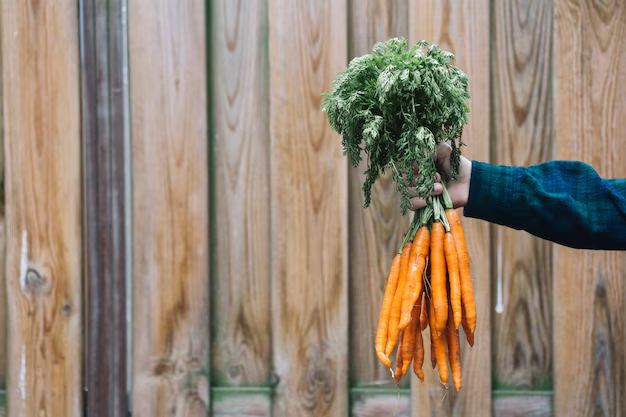Your Guide to Keeping Parsley Fresh: Tips for the Refrigerator
Imagine reaching into your refrigerator for some parsley to add a burst of freshness to your meal, only to find it wilted and unusable. Fresh herbs can elevate the culinary experience, but keeping them fresh can be a struggle. Let's dive into the secrets of maintaining parsley's vibrancy in your refrigerator, ensuring it stays flavorful and fragrant long after it’s been harvested.
Why Parsley Needs Proper Storage
Parsley is a delicate herb with a high water content, making it susceptible to quick wilting and spoilage if not stored correctly. When parsley is exposed to air in the fridge, its leaves can quickly become limp and yellow. Proper storage methods can help maintain its crispness, aroma, and flavor, making your meals truly exceptional.
Essential Preparation Before Storing Parsley
Just like establishing a solid foundation is critical in construction, preparing parsley properly is fundamental for its shelf life:
1. Washing and Drying
- Wash Gently: Rinse parsley under cold water to remove any dirt or pesticides. Delicately shake off the excess water or use a salad spinner for a quicker result.
- Dry Thoroughly: Pat the leaves dry with paper towels. Damp leaves can lead to mold growth, so ensure they're as dry as possible before storage.
2. Trimming the Stems
- Cut the Ends: Use a sharp knife to trim about an inch off the bottom of the stems. This practice, similar to cutting flower stems, allows parsley to stay fresh longer by absorbing water more effectively.
Storing Parsley in the Refrigerator
There are several popular and effective methods to store parsley in the refrigerator. Each method caters to slightly different needs, so consider experimenting to discover which works best for you.
1. The Mason Jar Method
This method is akin to how you might keep flowers fresh in a vase.
Steps:
- Fill a jar with about an inch of water.
- Place the parsley bouquet stem-down into the jar.
- Cover the leaves loosely with a plastic or produce bag.
- Store the jar in the refrigerator.
Benefits: The water keeps the stems hydrated, and the plastic bag helps to retain moisture without causing condensation.
2. The Paper Towel and Bag Method
This technique is excellent for those who need a simple, space-saving solution.
Steps:
- Lay the parsley on a paper towel and gently roll it up.
- Place the wrapped parsley in a resealable plastic bag, ensuring excess air is pushed out.
Benefits: The paper towel absorbs any moisture and prevents rot, while the sealed bag keeps the environment humid to fend off wilting.
3. Using an Herb Keeper
For those open to kitchen gadgets, consider an herb keeper.
Features:
- An herb keeper allows you to store parsley upright, much like the jar method, with added features to maintain optimal humidity and airflow.
Benefits: These containers are designed specifically to prolong the life of herbs, simplifying the fresh herb journey.
Common Mistakes When Storing Parsley
Even with the best intentions, a few common errors can sabotage your parsley storage efforts:
- Moisture Overload: Avoid sealing parsley while it's still wet. This encourages mold.
- Neglecting Regular Checks: Check parsley every few days to remove any yellowing leaves and change the water in the jar method to prevent bacterial growth.
- Overcrowding: Don’t cram the parsley into a tightly packed space. Allow air to circulate to prevent premature decay.
Related Topics for Fresh Herb Storage
Understanding how to efficiently store parsley can naturally lead to insights into broader herb storage practices and kitchen efficiencies.
1. Storing Other Fresh Herbs
Different herbs require different methods. While parsley benefits from a humid environment, herbs like rosemary and thyme need drier conditions. Understanding your herbs helps maximize their potential shelf life.
2. The Impact of Fresh Herbs on Cooking
Using fresh herbs like parsley not only enhances flavor but also offers nutritional benefits, adding vibrancy and aroma to your dishes while contributing vitamins and antioxidants.
3. Exploring Preservation Techniques
If you find your parsley heading toward spoilage, consider preservation through freezing or drying to capture its essence for later use.
Practical Tips for Kitchen Efficiency
Being a savvy kitchen manager means using herbs wisely and wasting less. Here are a few more tips for integrating parsley and other fresh herbs seamlessly into your cooking endeavors:
- Plan Your Meals: Incorporate parsley into multiple dishes throughout the week to ensure none goes to waste.
- Use Stems for Flavor: Parsley stems are packed with flavor. Use them in soups, stocks, or sauces for an extra taste kick.
🌿 Summarized Tips for Keeping Parsley Fresh:
- 🌊 Gentle Rinse & Dry: Always wash your parsley gently and ensure it’s fully dry before storage.
- ✂️ Trim Regularly: Cut the stem ends before placing them in water to keep them hydrated.
- 🫙 Mason Jar Method: Use a jar with water and a plastic bag cover for longevity.
- 🧻 Paper Towel Technique: Roll in a paper towel and place in a plastic bag for space-saving freshness.
- 👀 Regular Checks: Monitor and maintain moisture levels; remove decaying leaves promptly.
Successfully keeping parsley fresh in the refrigerator not only enhances your cooking but also reduces waste and saves money. Experiment with these methods to find what suits your lifestyle best, and enjoy parsley's delightful contribution to your culinary creations week after week.
With these practical approaches and a bit of attention, you can keep your parsley—and your other fresh herbs—crisp, aromatic, and flavor-packed. Happy cooking!
